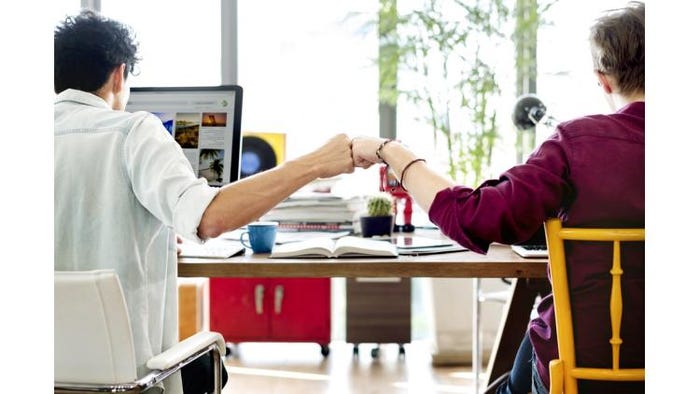Without better labeling, compostable packaging will struggle
November 7, 2019

San Francisco is often the poster child of compostable packaging. Polystyrene is banned, and restaurants are required to use compostable or recyclable containers and utensils. With supportive regulations, savvy consumers and access to composting infrastructure, compostable packaging should be a slam dunk, right?
Yet a recent interview with the San Francisco Examiner, a representative from Recology, the city’s recycling and composting service provider, confirmed that many compostable plastics were being pulled out by sorters and landfilled. Why? The problem is how these products are labeled.
Most compostable items, especially compostable plastics, look exactly like their non-compostable counterparts. Clamshell containers, lids and utensils are simply embossed, often on the bottom of the item, to identify them as compostable while claims on the products themselves vary widely, from “Compostable” to “Biodegradable” to statements about sourcing like “Made from corn.” Green or brown stripes may be added to larger items, but non-compostable items can also be marked with green or brown symbols.
Currently, compostable bags are the only category with best practices starting to take hold, like the use of green tinting, the words “Certified Compostable” in prominent text (1-inch or larger), and certification logos like BPI and OK Home Compost. For other product categories, especially clamshells and utensils, whether it’s actually compostable is anybody’s guess.
New laws push labeling of more products
New bills aim to address this confusion head-on. Washington’s HB 1569 (effective July 2020) and California’s proposed (but recently tabled) SB 54 outline labeling requirements for all compostable products, including product packaging, food serviceware and bags. Washington’s bill requires that all compostable products be labeled in a way that is “easily and readily identifiable” and include a certification logo or the word “Compostable.”
____________________________________________________________________________________________
 Find your success! Subscribe to free Packaging Digest enewsletters.
Find your success! Subscribe to free Packaging Digest enewsletters.
____________________________________________________________________________________________
These two new bills build on earlier versions of compostable labeling laws, which only address compostable bags. For instance, Maryland’s HB 1349, effective since October 2017, sets strict requirements for the use of certification logos, wording and green tinting on bags but not on other compostable plastics or compostable products. Ultimately, both types of laws aim to eliminate greenwashing, reduce consumer confusion and aid composters in identifying which products coming into their facility are actually compostable.
In the absence of clear labels, composters err on the side of caution
At Recology’s composting facility and at facilities across the country, sorters pull out unmarked, plastic-looking items to avoid contamination. Even compostable paper coffee cups are likely to be removed for fear they’re conventional paper cups lined with plastic. A compostable plastic may be embossed with a certification logo or the words “Certified Compostable,” but no sorter is going to be able to spot this subtle labeling.
Washington’s bill adds “processing facilities” to the list of stakeholders who need to be able to identify compostable products. This further limits what is considered “easily identifiable”—a consumer disposing of a cup may spot the green stripe, but composters and sorters trying to identify materials in a truck or within a pile will require the largest and most obvious labeling, far beyond what most products have today.
Consumers are increasingly frustrated with compostability claims
Consumers (as well as non-profits and media) are starting to put compostability in quotations—as in, “These bowls are ‘compostable’ but are actually landfilled.” More than a punctuation preference, this indicates that for many people, the claim (even when supported by third-party certification) doesn’t mean much unless the item actually gets composted.
The first and largest barrier to composting is the lack of widespread industrial facilities and curbside collection programs. But even in regions with composting infrastructure, like the Bay Area, consumers are frustrated that compostable packaging isn’t getting composted. If composters can’t identify what’s compostable and are pulling these items out of their trucks and composting piles, then it’s not truly compostable in the eyes of many consumers. Larger, more standardized product labeling is essential for identification, and by extension, consumer buy-in.
Compostable products need standardized labeling
Labeling laws will continue to evolve in the direction of requiring clear labeling for all products. Washington’s law is the first evidence of this. And if California passes a similar bill, manufacturers will need to tackle labeling in a key geographic market.
It’s not just food serviceware—CPG brands venturing into compostability for categories like compostable wrappers should pay close attention, learning from the pitfalls of compostable plastics and designing packaging a composter can quickly and easily spot.
Proposed and passed labeling bills refer to “industry standards” for labeling, which don’t yet exist—there’s no standard color to represent compostability, for instance. Manufacturers should collaborate pre-competitively to develop these standards, since better labeling benefits everyone. It eliminates bad actors making unverified compostability claims, and it allows consumers and composters alike to spot and sort compostable products more quickly and easily, increasing the chance these products will actually be composted.
____________________________________________________________________________________________
 WestPack 2020: Ideas. Education. New Partners. Feb. 11-13
WestPack 2020: Ideas. Education. New Partners. Feb. 11-13
____________________________________________________________________________________________
About the Author(s)
You May Also Like


